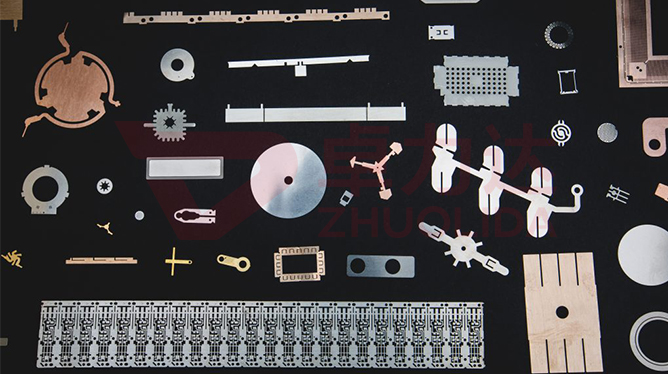
Chemical etching processing is a process that chemically dissolves and corrodes materials to form a specific pattern or shape. It is widely used in various fields, including electronics, decoration, and sign making. The main steps of chemical etching processing are described in detail below.
First, raw materials need to be selected and prepared before etching processing. Usually, these materials include metal plates, thin films and so on. When selecting materials, it is necessary to consider their corrosion resistance, mechanical properties and the appearance of the effect after processing. After preparing the materials, pre-treatment, such as cleaning and degreasing, is also required to ensure that the material surface is free of oil and impurities to improve the quality of the subsequent etching process.
Next is the graphic design and production stage. In this stage, it is necessary to use professional CAD software to carry out pattern design, and according to the design to produce the corresponding film film. These films will be used as masks in the subsequent exposure process to define the areas to be etched.
After completing the graphic design, the critical etching process is carried out. The first step is the lamination or coating process, in which a prepared film or photographic film is applied to the surface of the material to create the desired pattern during exposure. During the lamination or coating process, it is necessary to ensure that the film or photographic film is tightly adhered to the surface of the material without air bubbles or wrinkles.
This is followed by the exposure process, in which the laminated or coated material is placed in an exposure machine, where a chemical reaction occurs in the photosensitive portion through UV light irradiation. The exposure time needs to be precisely controlled according to the type of material, thickness and intensity of the light source to ensure the clarity and accuracy of the pattern.
After the exposure is completed, the developing process is carried out. In this stage, a developer solution is used to remove the photographic film or film from the unexposed portion, exposing the metal portion to be etched. During the development process, the concentration, temperature and time of the developer need to be controlled to avoid excessive corrosion or damage to the material.
After developing, the etching process is carried out. Etching is the process of forming the desired pattern by corroding the metal with a chemical solution. In the etching process, you need to select the appropriate etching solution, and according to the type of material and etching depth to adjust the concentration of etching solution and etching time. At the same time, it is also necessary to pay attention to the control of etching temperature to ensure that the etching speed and etching quality is stable.
After the etching is completed, the product needs to be cleaned and dried to remove excess etching solution and residues. During the cleaning process, pure water or special cleaning agent should be used to ensure that the product surface is free of stains and residues. Drying can be done by hot air drying or natural drying.
Finally, the etching processed products for quality inspection. Inspection content includes the integrity of the pattern, clarity, etching depth and surface quality. For products that do not meet the requirements, rework or scrap processing is required.
In the chemical etching process, we also need to pay attention to the following points: First, strict control of the operating specifications of each process to ensure that the quality and safety of processing; Second, regular maintenance and repair of equipment and tools to extend their service life; Third, strengthen the training and skills of operators to improve the efficiency and stability of the entire process.
In short, chemical etching processing is a complex and delicate process, the need to strictly control all aspects of the operating specifications and parameter settings. Through continuous optimization of the process and improve the technical level, can further improve the quality and efficiency of chemical etching processing, for the application of various fields to provide more high-quality, efficient etching products and services.
The above content is a detailed introduction to the steps of chemical etching processing, I hope to help readers. In practice, it is also necessary to flexibly adjust and optimize according to the specific circumstances in order to achieve the best processing results.
Contact: andy_Lai
Phone: 18938693450
E-mail: yw9@zldsmt.com
Add: Building A3, Huafa Industrial Park, Fuyong Town, Fuyuan Road, Fuyong Town, Baoan District, Shenzhen,China